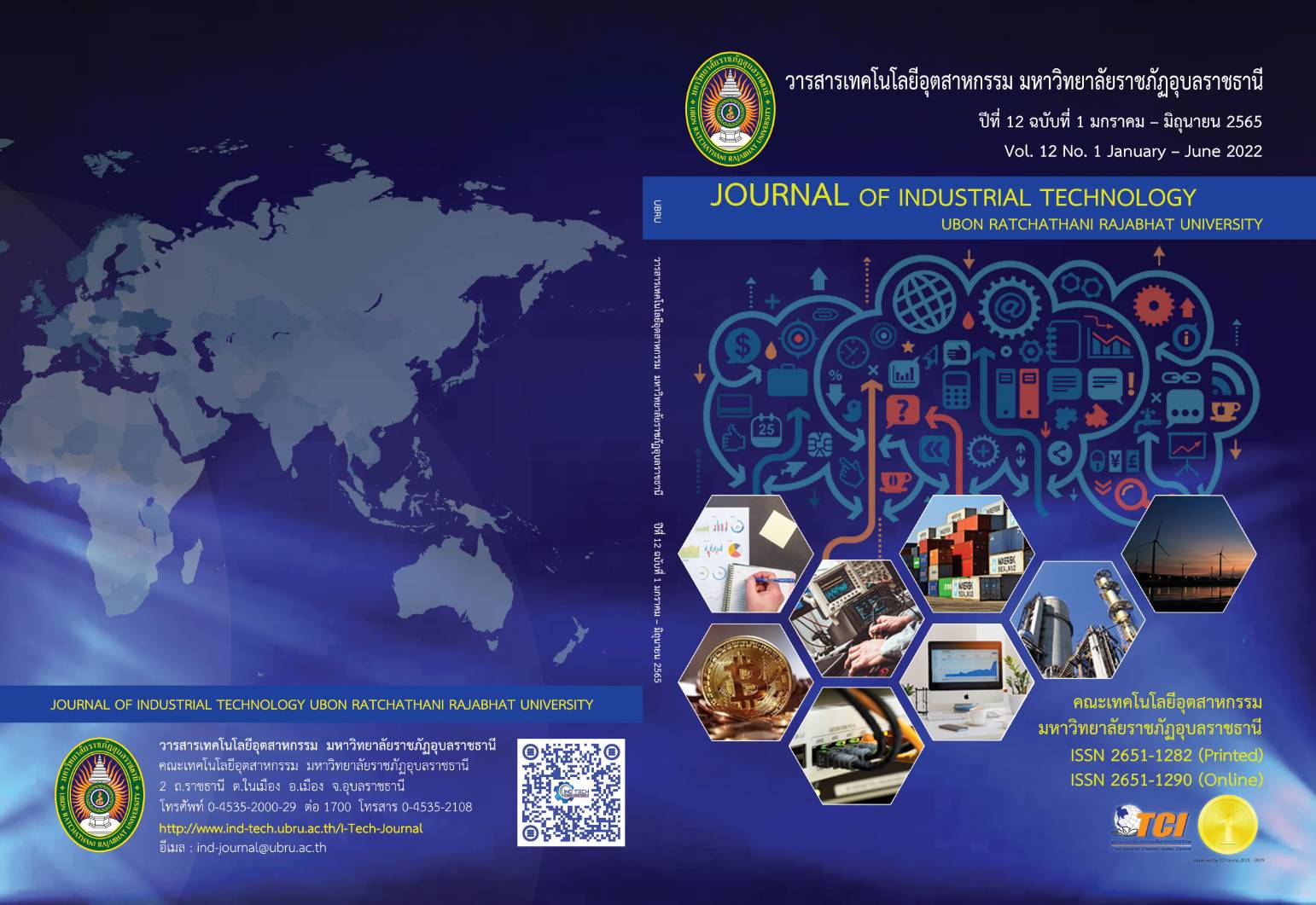PV Array Arrangement Shape Comparison and Wind Influent on Module Temperature in the Same Area
Main Article Content
Abstract
This article compares the actual wasted power cost of the three maximum 12 MW solar farm projects with different shapes: Trapezoidal shape Rectangle shape and polygon shape In the same area of the Solarco project Installed in the area of Bang Len District, Nakhon Pathom Province by comparing the calculated loss power factor from the actual measured panel temperature. This is the panel temperature influenced by the wind blowing from the north and south side. Other factors such as sunlight, ambient temperature, and wind speed were assigned the same values for all 3 projects. Data was collected for 365 days or in the year 2015 at 06:00 a.m. - 06:00 p.m., finding the difference in shape by the centroid method and comparing the wasted power of each project. It was found that the shape with the highest point position on the horizontal plane. The power loss is less than the shape with the position of the point on the vertical plane. When influenced by the wind blowing from the south Therefore, a rectangular shape with a point position on the horizontal plane that is greater than that of a trapezoid shape and polygon shape installed in the same area Therefore, the energy loss due to the least heat is 7.22 percent less than the trapezoidal shape and polygon shape. The power loss was 9.44 percent and 8.43 percent, respectively.
Article Details

This work is licensed under a Creative Commons Attribution-NonCommercial-NoDerivatives 4.0 International License.
Articles published in Journal of Industrial Technology Ubon Ratchathani Rajabhat University both hard copy and electronically are belonged to the Journal.
References
Ministry of Energy. Thailand Power Development Plan 2018-2580. [Internet]. 2019 [cites 2019 October 8] available from: http://www.eppo.go.th/images/POLICY/PDF/PDP2018.pdf (in Thai)
Department of Alternative Energy Development and Efficiency Ministry of Energy. Sun Radiation Intensity Database District level, year 2017. [Internet]. 2019 [cites 2019 November 11] available from: https://www.dede.go.th/ewt_news.php?nid=47941&filename=index (in Thai)
A. Shukla, Karunesh, Kant, Atual Sharma. Cooling methodologies of photovoltaic module for enhancing electrical efficiency: A review. International Journal of Solar Energy Material & Solar Cells. 2017; 160: 275-86
Hans Goverde, Dirk Goossens c, Jonathan Govaerts. Spatial and temporal analysis of wind effects on PV module temperature and performance. International Journal of Sustainable Energy Technologies and Assessment. 2015; 11: 36–41.
Hans Goverde, Dirk Goossens c, Jonathan Govaerts. Spatial and temporal analysis of wind effects on PV modules: Consequences for electrical power evaluation. International Journal of Solar Energy. 2071: 147; 292–9.
Nuri G€okmen, Weihao Hu, Peng Hou. Investigation of wind speed cooling effect on PV panels in windy locations. International Journal of Renewable Energy. 2016; 90: 283-90.
Ahmad Vasela, Frantzis Iakovidisb. The effect of wind direction on the performance of solar PV plants. International Journal of Energy Conversion and Management. 2017; 153: 455–61.

